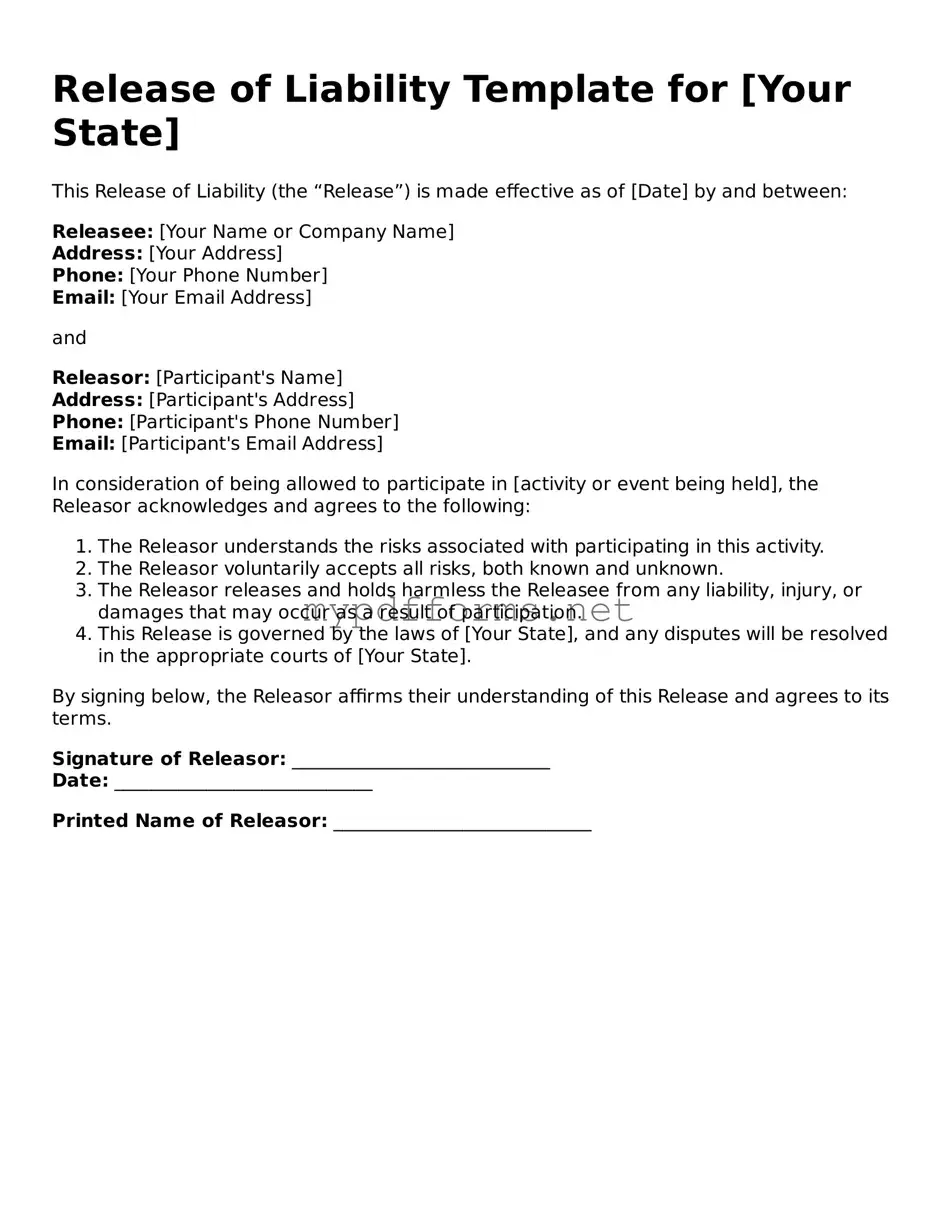A waiver form is similar to a Release of Liability form in that it also aims to protect an individual or organization from legal claims. Both documents require the participant to acknowledge the risks involved in an activity and agree to relinquish their right to sue for injuries or damages that may occur. The main difference lies in the terminology used; a waiver often emphasizes the voluntary relinquishment of a right, while a Release of Liability explicitly states the release of claims against the party involved.
An indemnity agreement shares similarities with a Release of Liability form, as both are designed to protect one party from financial loss due to the actions of another. In an indemnity agreement, one party agrees to compensate another for any damages or losses incurred. While a Release of Liability focuses on preventing lawsuits, an indemnity agreement emphasizes financial responsibility and reimbursement for losses.
An assumption of risk form is closely related to a Release of Liability form. Both documents require individuals to recognize and accept the inherent risks associated with a particular activity. The key difference is that an assumption of risk form may not necessarily release the party from liability; it primarily serves to inform participants of the risks they are taking on themselves.
A participant agreement often resembles a Release of Liability form. This document outlines the terms and conditions under which an individual agrees to participate in an event or activity. Like a Release of Liability, it may include clauses that limit liability and require participants to acknowledge the risks involved. However, a participant agreement may also include additional terms related to behavior, responsibilities, and expectations during the activity.
A rental agreement can be similar to a Release of Liability form in that both documents outline the responsibilities and liabilities of the parties involved. While a rental agreement focuses on the terms of renting property or equipment, it may also include clauses that release the landlord or rental company from liability for injuries or damages that occur during the rental period, similar to the protections offered in a Release of Liability form.
A confidentiality agreement, or non-disclosure agreement (NDA), shares some similarities with a Release of Liability form in that both documents aim to protect one party from potential harm. While a Release of Liability form protects against claims related to physical injuries, a confidentiality agreement protects against the unauthorized sharing of sensitive information. Both require the signing party to acknowledge the risks and agree to certain terms to safeguard the interests of the other party.
When engaging in various agreements and liability waivers, it is essential to ensure that all parties involved fully understand the documents they are signing. For instance, the Release of Liability for a Car is a specific form that serves to clarify the responsibilities of vehicle owners after the transfer of ownership, thus protecting them from future claims associated with the vehicle.
A sponsorship agreement may also resemble a Release of Liability form. In this case, the sponsor may seek to limit their liability for any claims arising from the event or activity they are sponsoring. Both documents typically include clauses that outline the responsibilities of each party and may require participants to release the sponsor from any legal claims related to injuries or damages that occur during the sponsored event.
A liability insurance waiver is another document that shares similarities with a Release of Liability form. Both documents aim to protect individuals or organizations from legal claims. A liability insurance waiver may require participants to acknowledge that they are waiving their right to seek compensation from the insurance provider for certain risks, while a Release of Liability form focuses on relinquishing the right to sue the organization or individual hosting the activity.
A medical release form can be compared to a Release of Liability form in that both documents require individuals to acknowledge potential risks. A medical release form typically allows healthcare providers to share medical information or perform procedures, while a Release of Liability form protects against claims related to injuries or damages. Both documents emphasize informed consent and the understanding of risks involved in the respective situations.
